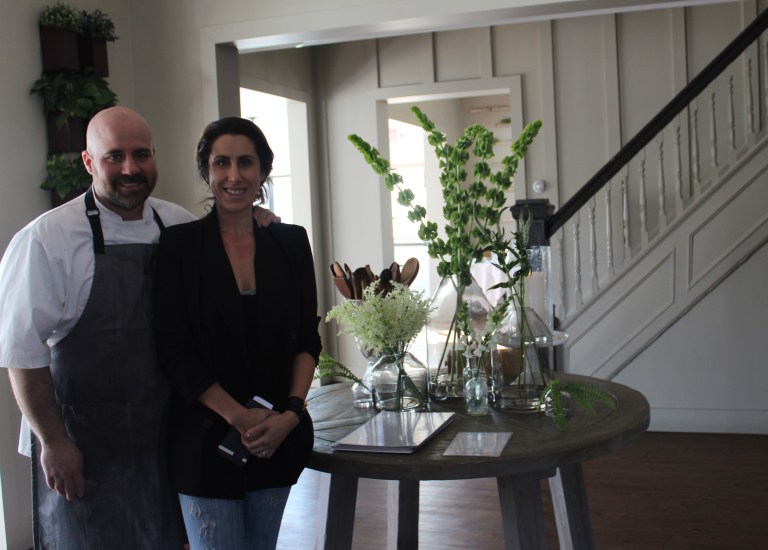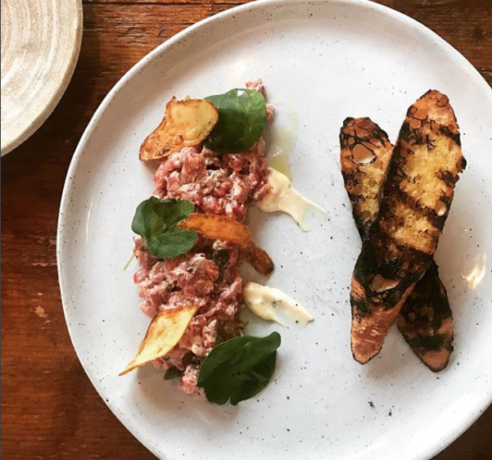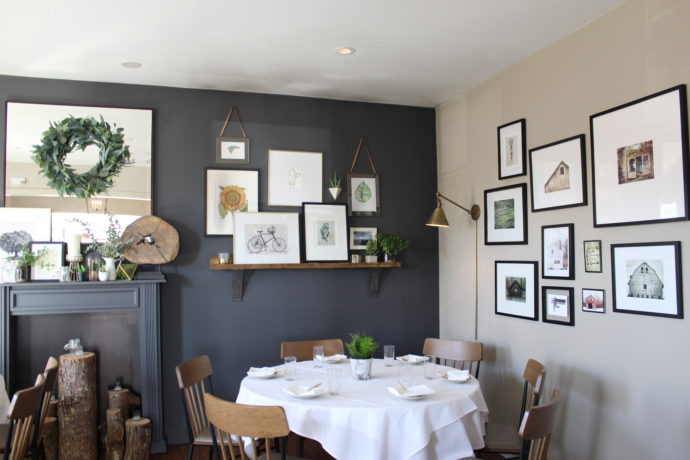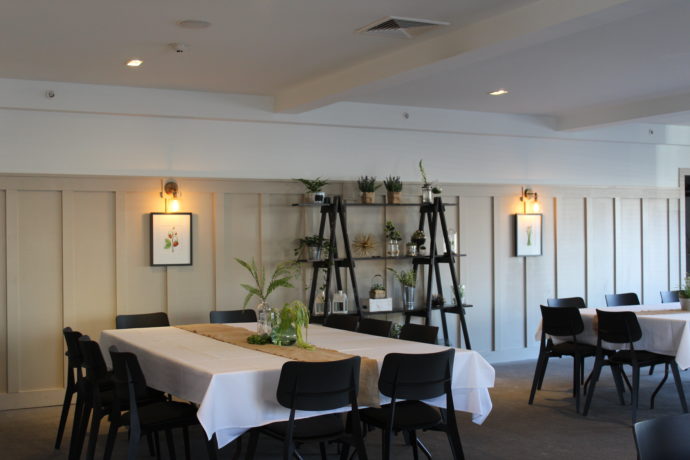
Turning a late 1800s farmhouse and long running French and Northern Italian cuisine restaurant into a modern, on trend dining experience isn’t the simplest of ventures, but for Greg and Bari Kearns the plan fell perfectly into place when La Marmite was up for sale a few years ago.
The couple, who own Copperhill on Hillside Avenue in Williston Park, said they simply created the restaurant they’d want to go to themselves.
“We haven’t had to be something we don’t want to be or adjust too much from being us, and its working,” Greg said. “That doesn’t always happen.”
The Kearns are currently in their second year running the restaurant Greg’s parents, Dick and Mo, first purchased when it was La Marmite.
After renovations beginning in July 2015, they re-opened as Copperhill that following October. Copperhill was recognized as one of the top 10 restaurants on Long Island by Newsday that same year.
The Kearns family, Williston natives, are no strangers to the property.
Dick’s parents used to be regulars at La Marmite, Greg said, and the idea was always in the back of his head for the family to take it over if it became available.
The family still lives locally. Dick and Mo live in East Williston, and Greg and Bari currently live in Williston Park with their two daughters, 9 and 4, in a house right next door to Copperhill.
Before opening Copperhill, though, the Kearns didn’t have too much restaurant experience.
Greg said he originally sought to follow in the footsteps of his father and pursued accounting at Boston College. After a spending summer in Spain for a business internship, he said his vision of what his future could look like changed.
“Their appreciation for food and their appreciation for gathering meals and all of that sort of was very much a turn on for me,” Greg said. “I kind of decided that food would be something I want to give a try.”

(Photo courtesy of Copperhillny via Instagram)
When he came back to the states he worked for a restaurant in Philadelphia, before returning to New York and attending the French Culinary Institute.
While Greg’s background in food helped shape the vision for the menu, Bari’s background in fashion sales played a key role in the rebranding and designing of the restaurant, Greg said.
“The fashion business and food business are very similar industries, not necessarily in the operations side but in the need to stay on trend and reinvent yourself,” Greg said. “It’s still sales and thats where Bari excels at sales, she excels at being on trend she knows what’s cool. And that’s not something you can teach.”
Although the restaurant’s style isn’t revolutionary, the couple said it was something that was lacking in Nassau County – an area Greg said has become a sort of “black hole restaurant wise.”

(Photo by Rebecca Klar)
“Fine modern cuisine had never really taken off here for some reason,” Greg said. “We can sense that that’s changing we kind of felt that we wanted to be a part of that change.”
In addition to the trendy atmosphere, the menu differs from those of restaurants in the surrounding area. Greg said that with many restaurants that fill the county, such as Italian restaurants or steakhouses, customers know what to expect from the menu.
With Copperhill, the menu is always changing with the season. Greg said the menu doesn’t stay the same for more than about six weeks, and even the descriptions of the items are vague enough to keep customers surprised before the dish arrives.
He added that there’s nothing wrong with the more traditional restaurants, but said Copperhill allows the public to discover a new type of dining experience.
Bari said the restaurant sees a wide range of customers, but said it attracts many expats from New York City like her and her husband who are looking for that type of dining experience in their own neighborhood.
The restaurant is also designed in a way that Bari said is both casual enough for a Tuesday and nice enough for a Saturday night out.
The different rooms around the restaurant feature different dining experiences.
The tap room, off the bar, is more laid back with no dining clothes on the custom-made tables repurposed from the wood of a 200 year old barn. Around the corner, there’s a more intimate, formal dining area for customers.

(Photo by Rebecca Klar)
Copperhill also has an indoor porch sitting area, which brick inlaid heated floors were added to during renovations. There’s also a back room, added to the original house in the 1980s, for parties and events.
When Dick first bought the restaurant, the family continued to run it as La Marmite for about a year and a half, always intending to renovate and rebrand, Greg said.
The time spent running La Marmite allowed for him and Bari to get a feel of the property to help guide their plans, Greg said.
The Kearns gutted the interior in July of 2015, and opened up as Copperhill that following October. The new design was more open than under prior ownership, and stayed more true to the building’s original farmhouse atmosphere.
Despite the trendy design, Greg said the restaurant is truly a mom-and-pop business, with him and Bari behind all the decisions.
It’s a family business from start to finish – from the family’s history with the former La Marmite, to Dick investing in his son’s vision.
Greg and Bari even said their two daughters are often running about the restaurant and love spending time there.
Throughout all the hard work the Kearns have put into creating Copperhill, Dick said, at the end of the day it just feels like his son and daughter-in-law are having a lot of people over for dinner every night.
Correction: An earlier version of this story identified them as the Kearnes family, not the Kearns family. It also identified La Marmite as an Italian restaurant, it was a restaurant with French and Northern Italian cuisine.






